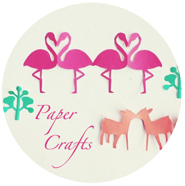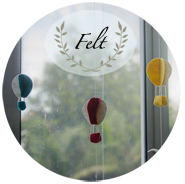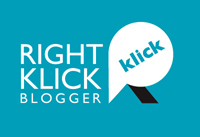We didn’t have the luxury to sleep in the Saturday morning of K’s Primary 1 Orientation, and crawled out of bed at 7.30am for a quick breakfast and made our way to K’s new ‘regular’ primary school at 8.30am to attend the Primary 1 Orientation session.
Definition of a Regular Singapore Primary School? 1. A school that is located within a HDB estate. 2. Do not have requirements for the parents to participate in the Parent Volunteer Programme, to be given priority for the child’s registration at the school (since, there are sometimes slots leftover after Phase 2C). And, 3. A school that is NOT listed in this list of Top 21 primary schools.
Here’s sharing my 1st hand experience from a first-time parent of a soon-to-be Primary 1 child, from a Primary 1 Orientation programme of a regular Singapore Primary school:
1. What to bring
Your spouse, or your child’s other guardian. As you will need someone to join the long queues while you take care of other matters, like filling in and handing in the forms. Also do bring a pen and remember your bank account details.
2. Parents Briefing
I received in the mail, about 1 month before, of K’s class details and where to gather for the orientation briefing. So the first thing that caught my attention before entering the school hall was a white board with list of registered students and class allocations.
We made our way to the school hall, where the entrances were flanked with tables labelled with the class names and were manned by the teachers. We collected a file from the teachers, filled with forms that we had to complete and key information to read.

K was first acquainted with his classmates and sat with them for the 1st 15 minutes of the briefing and were ushered with together with the other children, to their respective classrooms. While the parents sat through another 45 mins – 1 hour of a talk by the principal and vice principal, who gave a thorough introduction to the school programmes, practical tips on how to prepare your child (not academic btw), and things to take note of for the 1st day of school on 2nd January 2014.
For parents with children with high separation anxiety, pre-empt your child before the session that he/she will be going to classroom with the teachers and his new friends to do some interesting activities (i.e., worksheets, but you need not to be so explicit about it), while you will be sitting there to listen to a ‘boring’ adult discussion, so you will not be far from him/her.
Now, at this moment when the children are being led to their classrooms, it will be highly embarrassing to be that parent with the child who is wailing in tears and clinging onto you, refusing to join his/her classmates.
In case you are wondering. That didn’t happened to K, of course, as he couldn’t wait to make new friends and explore his new school with his classmates.

All the kids at the orientation seemed to be comfortably adjusted to the new environment, as I hardly saw any reluctant child being led away in pairs to their classrooms by the teachers and the prefect volunteers.
At the parents’ briefing, the principal highlighted 2 programmes that were unique to the school that made learning fun for the children; Drama was added to the curriculum for English and Chinese language learning. And there were 2 sessions of Mass Brain Activities weekly, where the children will get to play with various types of board games which will enhance their :
– Intrinsic motivation to achieve
– Facilitate cross training of the brain
– improve level of concentration and
– It is a reliable method for acquiring mental abilities and memory capacity
3. Forms to Fill
Do bring a pen along with you, to start filling in the forms, while waiting for the parents’ briefing to start. The forms that is needed to be completed include a Giro form, child and parent personal details form, school dental services form, feedback forms, Parent Support Group Form, etc.
Parents were led to the upper primary classrooms to complete these forms and hand the completed forms to the teachers.

4. What to buy
Uniforms, shoes, socks (if it is not the regular white shoes sold at the Bata shops) and school books. Do bring up to $300 to purchase these items, so that you do not have to make a second trip to the school, before school starts to get these things.
5. What else to do
a) Arrange for School transport
b) Recce the Canteen
Have brunch at the canteen while waiting for your child. Hb and I had early lunch at the canteen just to taste the food and find out the prices of the items. From there you can gauge how much will be enough in pocket money to be given to your child. Usually $1.50 – $2.50 will be adequate.
If your child hasn’t been trained how to order his own food independently, it will be a good opportunity to guide him along a practical life experience to use money and count exact change.
This will also be a good time to tell your child what to expect on the 1st day of school. This helps to build the anticipation that school is going to be liberating experience to be able to do things independently like a big boy / girl.
Also you can communicate and demonstrate what is expected, like washing hands before eating and after eating, also clearing own plates after the meal.
c) Explore the school premises

6. Optional. But not necessary.
No harm setting up first positive impressions as the enthusiastic and friendly parent, if you get to meet the form teacher, principal or vice principal.
Hb incidentally borrowed a pen from the Vice Head principal when he was in the queue to buy books, and then introduced me to the principal when I went to look for him in the canteen. Apart from saying ‘Hi, nice to meet you…’, it might be too lame to say, “My son is in 1B class and his teacher is Miss YY.” That will be too much information, really.
So instead of an awkward silence after the initial pleasanteries , I added that I have joined the parent volunteer group, to offer my ‘services’ of being the photographer if needed, so I will be seeing him around in the future.
It is a plus NOT to be a shy parent, remember, enthusiastic and friendly is always good.
7. What else your child needs to know before starting school in January:
a) Independent toileting skills
b) Pack their own bags
c) Transact
d) Tell Time
e) Understand the importance of adhering to school rules (especially for the free-spirited ones)
We walked away 3 hours later with a box of new books, new uniforms and all $250 poorer. But with good first impressions of the school and its teachers, as the orientation programme was well-organised with hassle-free.
The boy then remarked as we left the school, “I made new friends and I like my new school!” Sounds like a promising start to a new year of school very soon…

*All photos taken with my nifty iphone

























